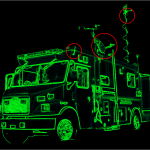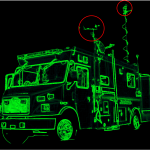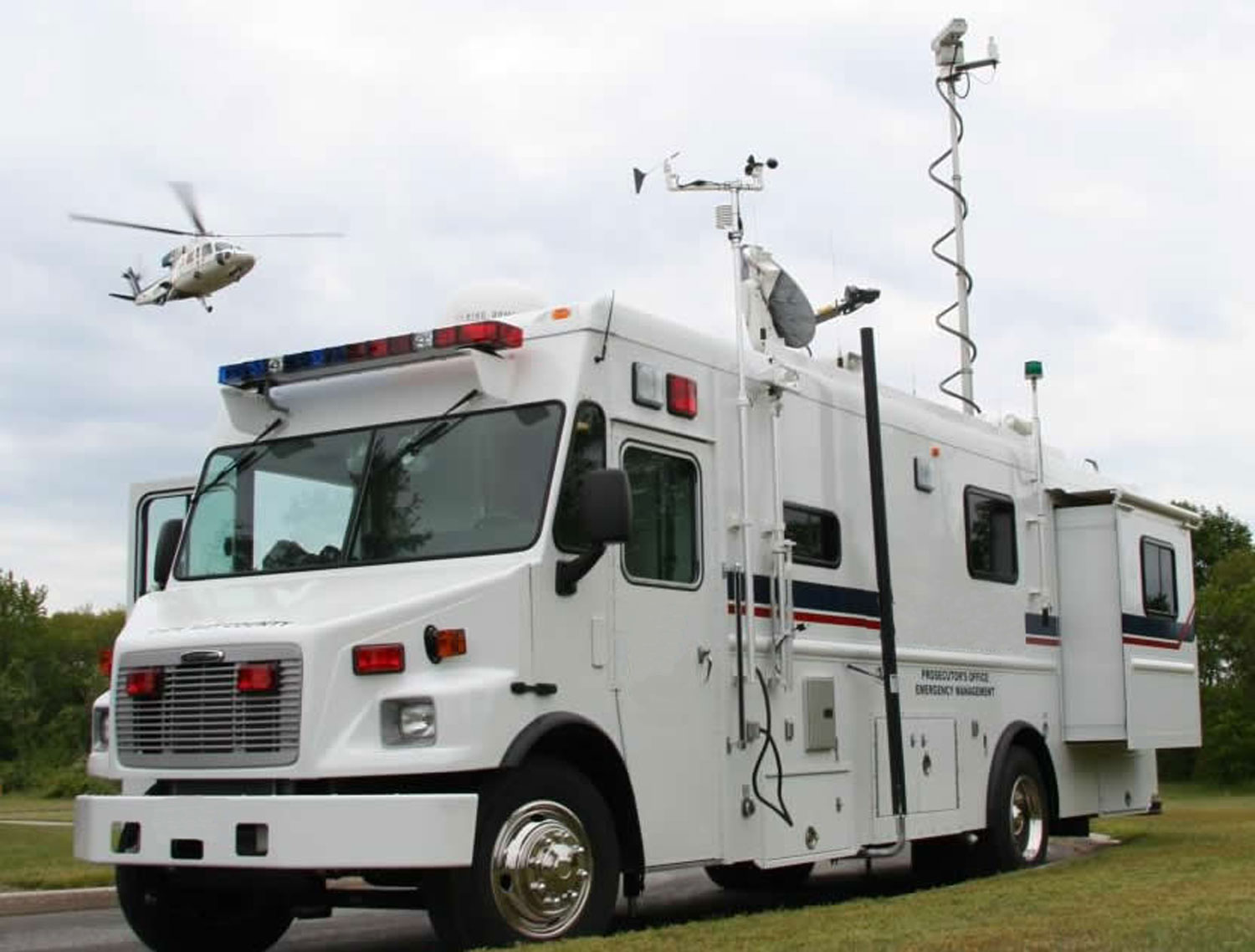[fsn_row][fsn_column width=”12″][fsn_text]
Looking to frame the Uplogix story around cyber resiliency the other day, we came up with a good metaphor: Uplogix works much like the incident control vehicles used by first responders in adverse weather or the all-too-frequent public safety incidents. We’ve all seen these vehicles on TV and a quick web search shows they are now standard equipment for local police, state agencies, and federal response teams. Let’s compare Uplogix in a network cybersecurity attack to an Incident Control Vehicle.
LOCAL
The mobile command centers travel to where the action is. It’s much more difficult to manage a response from afar. Uplogix similarly deploys in the rack with the gear under management — not sequestered away in the NOC. The key is connecting to managed devices over the console port, like a technician with a laptop. No distortion or risk from running SNMP over other networks, just direct CLI commands.
RESILIENT COMMUNICATIONS
 Incident command trucks bring their own communications with them so they don’t have to count on the local infrastructure. Bad weather often knocks out power and high winds drop trees on overhead lines. It’s common for these trucks to include a wide variety of radios, cellular and satellite communications to ensure they can reach all players, all the time, ensuring that information flows two-ways.
Incident command trucks bring their own communications with them so they don’t have to count on the local infrastructure. Bad weather often knocks out power and high winds drop trees on overhead lines. It’s common for these trucks to include a wide variety of radios, cellular and satellite communications to ensure they can reach all players, all the time, ensuring that information flows two-ways.Uplogix creates its own out-of-band network over the most effective means at each site — a cell connection, a regular phone line, a satellite modem, maybe a fiber connection to a secondary network. The point is that even if the primary network is down, information flows two-ways, not only providing admins remote access to gear, but also backfilling centralized tools like Solarwinds with information about the site.
LOCAL DATA
 Beyond just being onsite, many command vehicles are collecting local data through weather stations, video surveillance, and more recently, drones that provide easy, and quick eyes in the sky.
Beyond just being onsite, many command vehicles are collecting local data through weather stations, video surveillance, and more recently, drones that provide easy, and quick eyes in the sky.Uplogix pulls data directly from network infrastructure like routers, firewalls, and switches. For example, over 40 variables are collected from a Show Interface command that are available for trending and intelligent decision making. Automated service level tests like synthetic VoIP calls and HTTP transactions correlate infrastructure performance data to triangulate and pinpoint service-related problems.
TAKING ACTION
Incident commanders combine direct access to the scene and robust communication with involved parties to coordinate responses and solve problems. Like the incident commanders in the truck, Uplogix can make informed decisions based on the most recent data, expediting response to the issue and speeding recovery as quickly as possible.
[/fsn_text][/fsn_column][/fsn_row]





